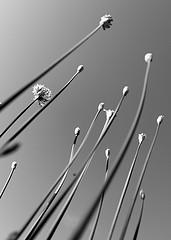Emily Dickinson
Wednesday, October 9th, 2013The biography of Emily Dickinson (Amhers, New England, 1830-1886) is full of oddities and silences. Jorge Luis Borges wrote about his life: there is, I know, a life more passionate and more solitary than this woman. He preferred to dream of love and perhaps imagine it and fear it. In their reclusive village of Amhers sought the seclusion of his house and, at his home, the seclusion of white color and the not to be see by a few friends that he received. In those years of voluntary closure, election that took very young, built one of the strongest works of universal literature. He was smart, rebellious and cultured, as his own poetry. Emily published six poems in life. Almost all appeared in local newspapers on the initiative of his sister-in-law and against their will. After his death were discovered 1775 poems, most written between 1858 and 1865, which revealed before critics and readers as one of the great poets of all time. Four years after his death, in 1890, was published a first volume with part of his work. Today there are countless publications of his obras completas in hundreds of languages. There also a copious and interesting correspondence that he held with characters such as Emerson and Samuel Bowles. To me particularly excited me letters exchanged with her cousins, the Norcross sisters, therefore in are everyday life becomes the purest of poems: I open my window, and the room is filled with white dirt. I think that Dios should be cleaning the dust; and the wind is blowing so I hope to read in The Republican warning signs for Amhers or absolutely boat has sailed from Phoenix Row life is so Rotary that desert touches each unoa ever. (letter to Louis and Frances Nocross in March 1873).The story of Emily is a drop that struggle at sea.
 (letter directed to Louis and Frances Nocross in March of 1873). The history of Emily is the one of a drop that struggles in the sea. If so that battle was not stops to excel, on the contrary she looked for to disappear. In a poem she wrote: How horrible to be somebody! /Impudicia What. What would think Emily Dickinson of their world-wide fame? Its poetry renewed the panorama of Literature and since then its name is a reference forced for specialists and readers. According to their biographer, George Frisbie, the poems of Emily Dickinson, the last and, from an artistic point of view, more perfect product of the Renaissance of the New England, have calmly reached the rank of classic of North American Literature. and I diminish more ahead in the same paragraph he affirms Its work, he has gained an increasing number of readers who understood the high integrity of their poetic crafts and those who it would not happen oneself to them to exclude it from the North American letters, as could not do it with Poe, Emerson or Whitman. More recently Harold is it to Bloom including in its canon of the West like the unique woman deserving poet of such privilege.
(letter directed to Louis and Frances Nocross in March of 1873). The history of Emily is the one of a drop that struggles in the sea. If so that battle was not stops to excel, on the contrary she looked for to disappear. In a poem she wrote: How horrible to be somebody! /Impudicia What. What would think Emily Dickinson of their world-wide fame? Its poetry renewed the panorama of Literature and since then its name is a reference forced for specialists and readers. According to their biographer, George Frisbie, the poems of Emily Dickinson, the last and, from an artistic point of view, more perfect product of the Renaissance of the New England, have calmly reached the rank of classic of North American Literature. and I diminish more ahead in the same paragraph he affirms Its work, he has gained an increasing number of readers who understood the high integrity of their poetic crafts and those who it would not happen oneself to them to exclude it from the North American letters, as could not do it with Poe, Emerson or Whitman. More recently Harold is it to Bloom including in its canon of the West like the unique woman deserving poet of such privilege.